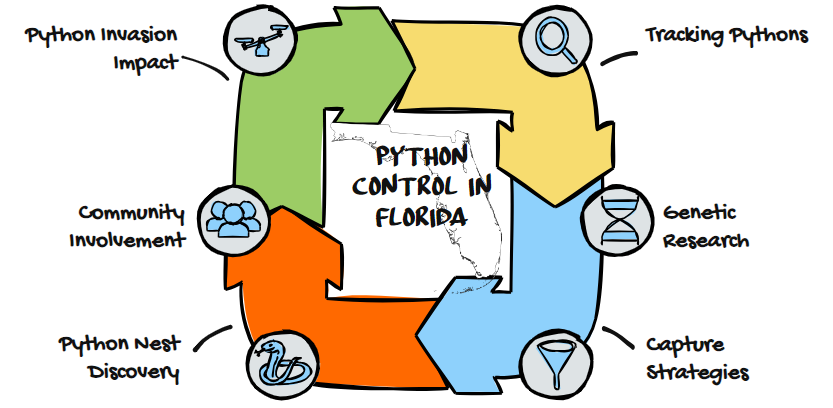Science Is Helping Florida Win the War Against Invasive Pythons
Scientists Develop Effective Strategies for Removing Invasive Pythons in Florida
Researchers from the University of Florida have analyzed data from a python removal program to identify the most effective strategies for removing invasive Burmese pythons in Florida. Their study, published in Scientific Reports, reveals key areas and conditions that improve survey outcomes, providing guidelines for contractors and natural resource managers to optimize their efforts.

Key Findings:
- Surveys are most successful during the wet season (May to October) and at night (8 pm to 2 am).
- A drop in barometric pressure from the previous day increases the likelihood of successful surveys.
- Aquatic vehicles enhance survey effectiveness, and nighttime surveys generally yield better results than daytime surveys.
- Two regions were identified as high-priority areas for increased python removals: the western edge of Big Cypress National Preserve and a stormwater treatment area in Palm Beach County.
Implications:
The study's findings provide crucial insights for managing invasive pythons in Florida, which can disrupt food webs and reduce populations of key native species. By refining removal strategies, researchers aim to give native wildlife a chance to adapt and persist. This collaborative effort between researchers, natural resource managers, and residents demonstrates the potential for effective wildlife conservation.
Invasive Burmese Pythons in the Everglades
The Everglades, a vast and unique ecosystem in south Florida, is facing a significant threat from the invasive Burmese python. These massive snakes, native to Southeast Asia, were released into the wild through the pet trade and have since established a breeding population in the Everglades. The pythons prey on native wildlife, including endangered species such as the Florida panther, Key Largo woodrat, and the Cape Sable sparrow. They also disrupt the delicate balance of the ecosystem, consuming birds, mammals, and reptiles that play crucial roles in the Everglades' food web. With no natural predators and the ability to grow up to 20 feet in length, these invasive snakes are a significant concern for wildlife conservationists and ecosystem managers, who are working to develop effective strategies for controlling their population and mitigating the damage already done.
Digg In @ SciTechDaily
